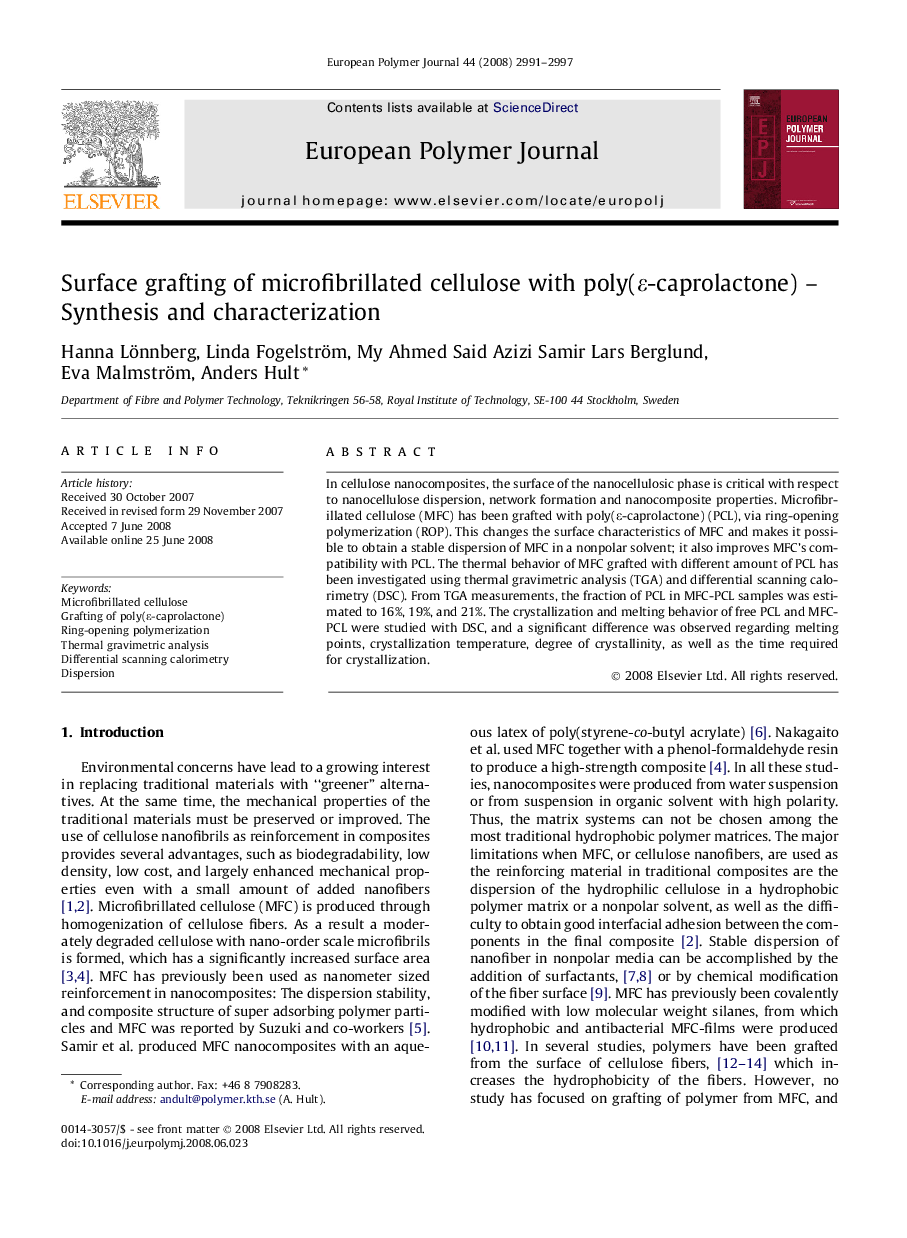| Article ID | Journal | Published Year | Pages | File Type |
|---|---|---|---|---|
| 1400064 | European Polymer Journal | 2008 | 7 Pages |
In cellulose nanocomposites, the surface of the nanocellulosic phase is critical with respect to nanocellulose dispersion, network formation and nanocomposite properties. Microfibrillated cellulose (MFC) has been grafted with poly(ε-caprolactone) (PCL), via ring-opening polymerization (ROP). This changes the surface characteristics of MFC and makes it possible to obtain a stable dispersion of MFC in a nonpolar solvent; it also improves MFC’s compatibility with PCL. The thermal behavior of MFC grafted with different amount of PCL has been investigated using thermal gravimetric analysis (TGA) and differential scanning calorimetry (DSC). From TGA measurements, the fraction of PCL in MFC-PCL samples was estimated to 16%, 19%, and 21%. The crystallization and melting behavior of free PCL and MFC-PCL were studied with DSC, and a significant difference was observed regarding melting points, crystallization temperature, degree of crystallinity, as well as the time required for crystallization.
